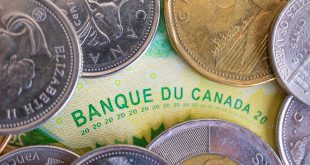The US Consumer Price Index statistics, the most significant indicator of inflation, will be released by the US Bureau of Labour Statistics on July 12 at 12:30 GMT. Here are the predictions made by the economists and analysts of 12 major banks regarding the impending United States inflation print for the month of June as markets approach closer to the release time.
In May, the headline CPI slowed to 4% year-over-year; in June, it is predicted to slow further to 3.1% YoY. Core CPI increased at a stubbornly high rate of 5.3% YoY, and forecasts for the upcoming release are at 5% YoY. In terms of MoM, headline is anticipated to be 0.3% compared to May’s 0.1%, and core is anticipated to have slowed to 0.3% compared to May’s 0.4%.
ANZ
We expect both headline and core CPI inflation to rise by 0.3% MoM in June. Such an outcome would still be too hot for the Fed. Although goods price inflation should remain subdued and further reductions in rent-based inflation are likely to occur, the Fed needs to see more of a slowdown in core services ex-housing to be confident overall inflation is headed to 2% sustainably. For this to happen labour market conditions need to soften further and with it wages growth.
Commerzbank
We expect the core index to increase by 0.3% from May. Compared with the core rates of at least 0.4% recorded since November, this would be a clear step in the right direction from the Fed’s perspective, even if only MoM rates of around 0.2% are compatible with its 2% inflation target. Such an outcome would probably not change the prospect of an interest rate hike at the upcoming FOMC meeting on July 25/26 as it has been indicated by Chair Powell. However, as the underlying price pressure should weaken further in the coming months, we do not expect any further rate hikes thereafter. This is also supported by the fact that the headline inflation rate has probably already weakened considerably in June. Overall consumer prices are likely to have risen by only 0.2% from Mayn. The YoY rate would then fall from 4.0% to 3.1%.
Credit Suisse
We expect core CPI inflation to step meaningfully lower in June to 0.2% MoM. The decline would be welcome for the Fed since core inflation has seemingly been stuck around a monthly run rate of 0.4% so far this year. The YoY reading of core inflation is likely to decline to 4.9%, with headline inflation coming in at 3.1% YoY, continuing its path toward target. A reading in-line with our expectations would represent the lowest run rate for core inflation in 22 months.
ING
A 0.3% MoM reading for headline and core inflation would see the annual rate of headline inflation slowing to 3.1% from 4% and core (ex-food and energy slowing to 5% from 5.3%). While this will do little to alter the likelihood of a July hike, it could at the margin provide a little relief and see longer-dated interest rate expectations tick a little lower.
TDS
Our estimates for the CPI report suggest core price inflation likely lost meaningful momentum in June: We expect it to print 0.2% MoM – the slowest monthly pace for the core since 2021. We also look for a similar 0.2% gain for the headline. Note that our unrounded core CPI inflation forecast is 0.23%, so we judge the risk of a 0.3% m/m advance to be larger than that of 0.1%. Our MoM forecasts imply 3.1%/4.9% YoY for total/core prices.
Deutsche Bank
We expect a +0.20% MoM gain for headline CPI (vs. +0.12% previously) and a +0.28% increase for core (vs. +0.44%) which would have the YoY rate for the former dropping by a full percentage point to 3.1%, while that for the latter would drop by 30 bps to 5.0%, both in line with consensus. This would leave the three (4.6% vs. 5.0%) and six-month annualised (4.8% vs. 5.1%) core rates still well above the Fed’s target.
NBF
The energy component could have had a limited impact on the headline index, as a slight rise in gasoline prices could have been more or less offset by a drop in the utility gas services segment. Expected gains for shelter could still result in a 0.3% monthly increase in headline prices. If we’re right, the year-on-year rate should come down from 4.0% to a 27-month low of 3.1%. The core index could also have advanced 0.3% on a monthly basis, something which would translate into a 5.0% annual gain.
RBC Economics
US headline inflation in June likely slowed to 3.2% on a YoY basis (0.3 MoM), with widespread moderation among food, energy, and other components. Core inflation (ex-food and energy) is expected to decelerate too (5% YoY, 0.3% MoM) as some of the key drivers of recent monthly readings, including rents and used cars, start to turn around following easing in market-posted rent indices and declines in the Manheim used car index.
SocGen
It will be the US turn on Wednesday to reveal just how quickly headline inflation is easing, with another 0.8pp decline in the annual rate. However, the core rate is likely to decline by just 0.3pp and remain high at 5.2% YoY. Indeed, easing headline inflation is likely to increase demand pressures on core inflation, which will only add to central banks’ inclination to continue tightening policy.
CIBC
Base effects will be behind a sharp drop in the pace of annual headline inflation to 3.1% in the US in June, as surging gasoline prices from a year ago drop out of the calculation. That will leave inflation at the slowest pace since March 2021. Excluding food and energy, core price pressures could have also subsided to a pace not seen since late 2021 at 5.0%, with potentially slower inflation in shelter adding to a possible drop in used car prices, in line with industry measures. But all eyes will be on the Fed’s preferred measure of underlying prices tied to demand, core services ex. housing, which will provide an indication of how the tight labor market is feeding through to inflation.
Citi
US core CPI inflation should continue to slow more noticeably in June, with Citi Research forecasting a 0.256% MoM rise, the softest core increase since September 2021. This will likely spur further optimism around easing of inflationary pressures in H2’23. The slowing in core CPI is likely to be a result of further easing in shelter prices (we forecast 0.47% owners’ equivalent rent and 0.50% primary rents) and a drop in used car prices (-0.8% MoM) – both of which should continue to imply easing core CPI over the coming months. Importantly, however, the divergence between core CPI and core PCE could be particularly noticeable this month.
Wells Fargo
We forecast the headline CPI to rise a modest 0.2% in June. Favorable base comparisons due to last year’s surge in energy and food prices should set up the year-over-year rate to fall nearly a full percentage point to 3.1%. We look for the core CPI to downshift alongside a decline in core goods prices. The ongoing improvement in supply chains has helped to ease pressure on goods, and we expect vehicle prices to contract in June. At the same time, core services are likely to stay firm. Shelter inflation is only slowly cooling off, while medical care and recreational services have scope to rebound in June. The Fed will welcome the continued moderation in price growth, though the road back to 2% inflation remains long.
ANZ
We expect both headline and core CPI inflation to rise by 0.3% MoM in June. Such an outcome would still be too hot for the Fed. Although goods price inflation should remain subdued and further reductions in rent-based inflation are likely to occur, the Fed needs to see more of a slowdown in core services ex-housing to be confident overall inflation is headed to 2% sustainably. For this to happen labour market conditions need to soften further and with it wages growth.

CPI
 Noor Trends News, Technical Analysis, Educational Tools and Recommendations
Noor Trends News, Technical Analysis, Educational Tools and Recommendations




